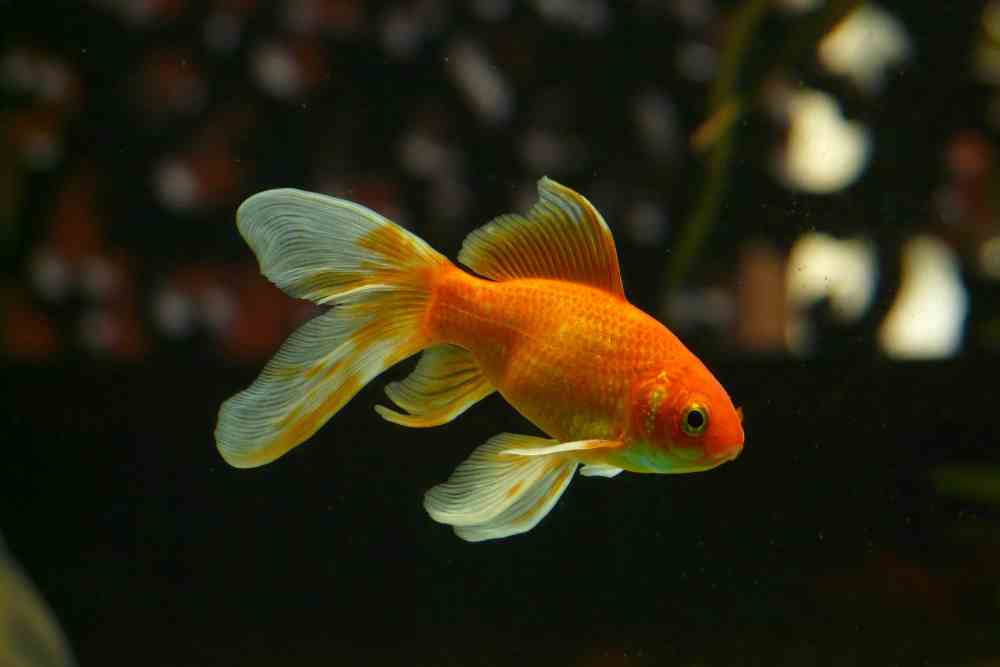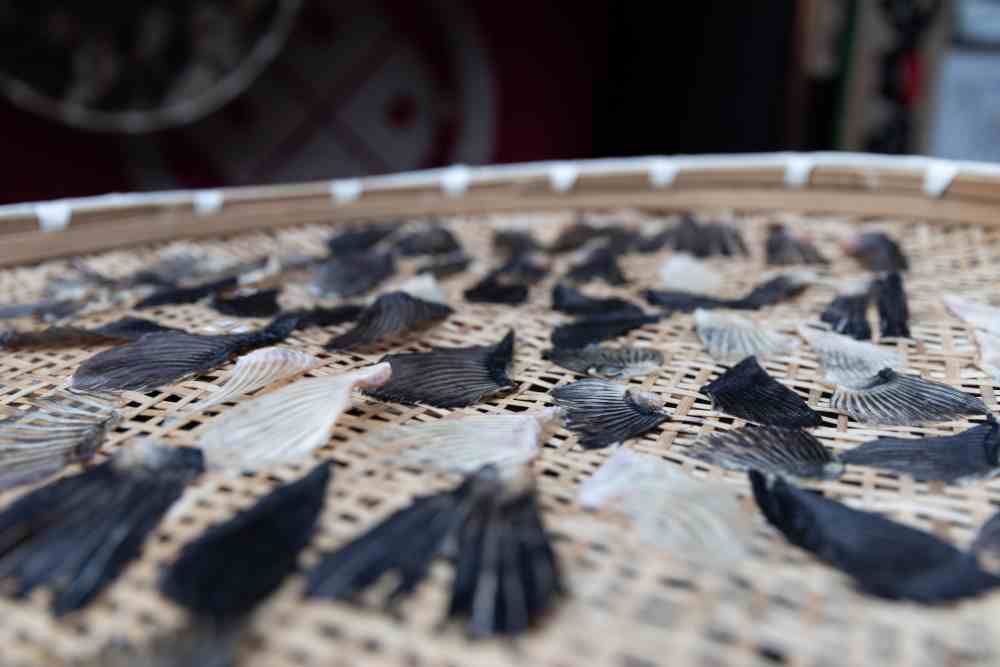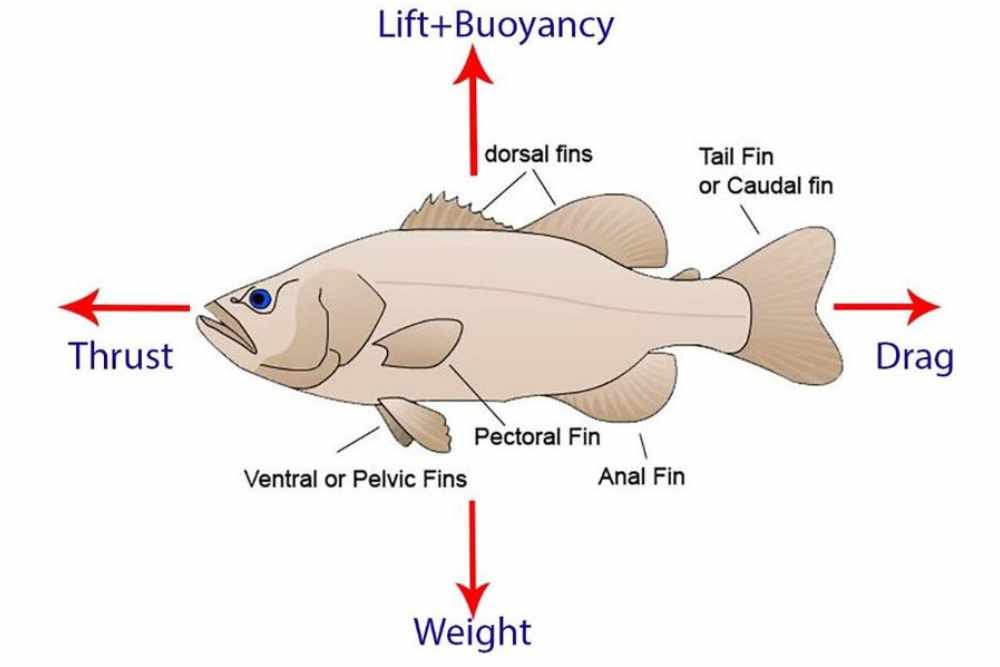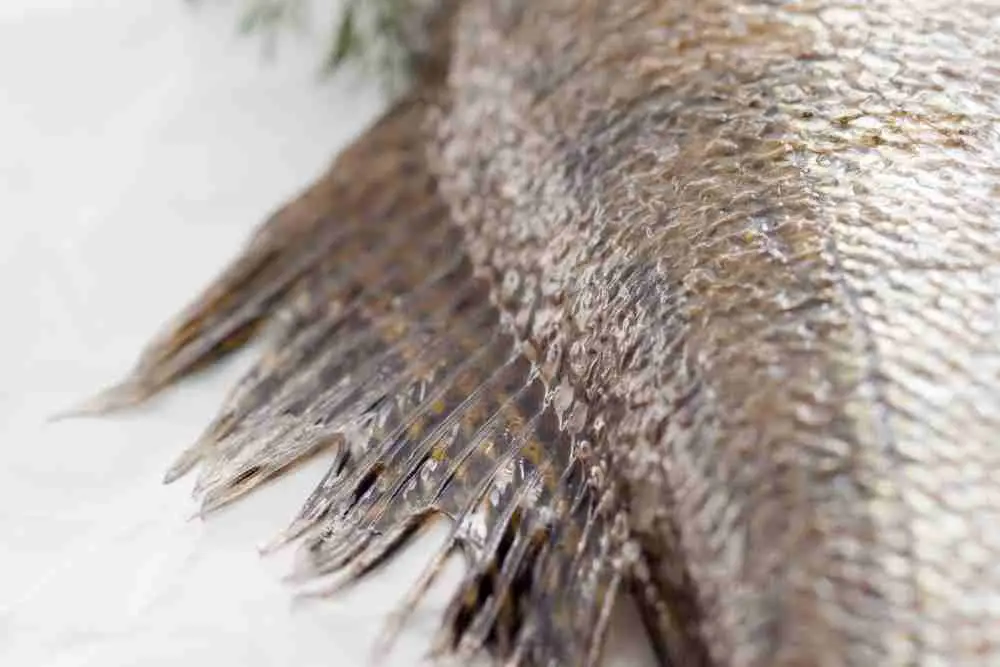Fish fins are modified limbs that are used for locomotion, steering, and balance. There are several types of fins, including pectoral fins (located on the sides of the body), pelvic fins (located on the lower part of the body), anal fins (located on the underside of the body), and caudal fins (located on the tail).
There are several different types of fin that serve various roles and functions – each with their own unique features.
This article will explore the types, features, and functions of fish fins to better understand how they benefit fish.

What is Fish Fins?
Fins are thin, broad fold of integument internally supported by fin rays which may be bony, cartilaginous, feverous or horny.
Fish fins are incredible appendages that allow the aquatic creature to propel themselves, maneuver through water and navigate their environment. These are appendages that are used for movement, balance, and steering in the water.
They come in a variety of shapes and sizes and serve different functions for various species of fish.
Fishes’ median fins (dorsal, caudal, and anal fins) play a large role in the generation of forces in fishes as they swim steadily, accelerate, and move around in the aquatic environment.
Fish Fin Anatomy

The bones of the fin, which are called pterygiophores, are arranged in a series of rows that extend from the body of the fish.
Fish fins may be either spiny or soft, depending on the species. Spiny fins, such as the spiny dorsal fin, are characterized by sharp, bony spines that protrude from the fin.
Soft fins, on the other hand, are characterized by soft, flexible rays that are not as sharp or bony as the spines found in a spiny fin.
Fish fins can be found on the back (dorsal fin), sides (pectoral fins), and underside (pelvic fins) of the fish, as well as at the back (caudal fin or tail fin).
The number and arrangement of fins can vary among different species of fish, and can be used for different functions, such as locomotion, balance, and steering.
Fish Fin Functions
Fish fins play a variety of roles in the lives of fish, including locomotion, balance, and steering. Here are a few examples of the functions of different types of fish fins:
Dorsal fin: The dorsal fin is located on the top of the fish and is used for balance and stability. It helps the fish maintain an upright position in the water and can also be used for steering and maneuvering.
Caudal fin (tail fin): The caudal fin, also known as the tail fin, is the main source of propulsion for most fish. It is located at the back of the fish and is used for swimming and for changing direction.
Anal fin: The anal fin is located on the underside of the fish, near the tail fin. It helps with balance and stability, and can also be used for steering.
Pectoral fins: The pectoral fins are located on the sides of the fish, just behind the gills. They are used for steering and maneuvering, and can also be used to help the fish stop or slow down.
Pelvic fins: The pelvic fins are located on the underside of the fish, near the front of the body. They are used for steering and can also be used to help the fish stop or slow down.
Fish Fin Diagram

Fish Fin Types | Fish Fin Names
There are different types of fish fins based on their functions and positions. Broadly fins are categorized on two type,
- Median (Unpaired) fins: Dorsal, caudal and anal fins
- Lateral (Paired) fins: Pectoral and pelvic fins
Each type features its own unique set of characteristics and serves distinct purposes. The mechanical and anatomical attributes of fish fins mostly derive from swimming performance.
Here is a description about how are fish fin categorized:
Dorsal Fin

Dorsal fins are located on the top or back of a fish’s body, and they are used for quick stop and turn.
Types of Dorsal Fin
According to the structure of the dorsal fins the are categorized into following sub categories,
Proximal fin: The proximal fin is the fin closest to the head of the fish. It is often located on the fish’s back, near the gills.
Central fin: The central fin is located in the middle of the fish’s body, typically on the fish’s back.
Distal fin: The distal fin is the fin farthest from the head of the fish. It is often located on the fish’s tail
In few fish, central and distal fin fused and formed a continues fin.
Some fish, such as sharks have one large triangular dorsal fin, while others, such as bony fish, have two smaller dorsal fins.
Dorsal fins also may be,
- Single
- Pointed
- Spine triangular
Adipose Fin
The adipose fin is a small, fleshy fin that is located on the back of some species of fish, usually between the dorsal fin and the caudal fin.
It is a soft, fatty fin that is not supported by any bony structure and is not used for movement or propulsion.
The function of the adipose fin is not fully understood, and it is thought to serve a number of different roles.
Some scientists believe that the adipose fin may help to stabilize a fish’s body in the water, while others believe that it may help to regulate a fish’s body temperature or provide a site for muscle attachment.
In some species of fish, the adipose fin may also play a role in communication or social behavior.
The adipose fin is found on a variety of different species of fish, including salmon, trout, char, and some species of catfish.
It is not found on all species of fish, and it is generally not considered to be an essential fin for a fish’s survival.
Pectoral Fin

Pectoral fins are located on the sides of a fish’s body, just behind the gills. They are used for steering and maneuvering, as well as for slowing down or stopping.
Pelvic Fin
Pelvic fins are located on the underside of a fish’s body, near the head. They are used for steering and maneuvering, as well as for slowing down or stopping.
Anal fins are located on the underside of a fish’s body, near the tail. They are used for stability and balance, as well as for steering and maneuvering.
Pelvic fins are significantly less important for fish swimming. Their form and function have changed over time in response to distinct situations. During the evolutionary process, many species lost pelvic fins.
Anal Fin
The anal fin is a fin located on the underside of the fish. It is usually found in ventral side of fish behind the anus, hence the name “anal fin.”
The anal fin support the dorsal fin and helps with balance and stability, and can also be used for steering.
It’s also known as cloacal fin. The shape and size of the anal fin can vary among different species of fish.
In some species, the anal fin is small and inconspicuous, while in others it is large and prominent.
The number of rays in the anal fin can also vary, with some species having a few rays, while others have many.
The anal fin is not typically used for locomotion, as it is not as powerful as the tail fin. However, it can be used to help the fish stop or slow down when swimming.
Caudal Fin

Caudal fins, also known as tail fins present in the very posterior (end) region of the vertebrate axis that are used for forward propulsion during swimming.
These fins are consist of dorsal epichordal lobe (Upper lobe) and ventral Hypochordal lobe (lower lobe).
The basic structure of the caudal fin is a basic distinguishing feature of vertebrates has been present during the formation of jaws and is found both agnathans and gnathostomes.
Vertebrates, or animals with a backbone, have evolved a wide variety of tail shapes to suit their different lifestyles and habitats. Some tails are long and thin, while others are short and stocky.
This have strong swimming muscle and can used to identify fish species. Some are used for propulsion, such as the tail of a fish, while others are used for balance, such as the tail of a monkey.
Some tails are used for communication, such as the tail of a peacock, while others are used for defense, such as the stinging tail of a scorpion.
Types of Caudal Fin
There are three major types of caudal fins found in different types of fish.
- Protocercal caudal fin
- Heterocercal caudal fin
- Homocercal caudal fin
1. Protocercal Caudal Fins
It’s very primitive types of caudal fin. They are straight to the vertebral column and have V-shaped pointed to equal lobe.
2. Heterocercal Caudal Fin
This type of caudal fin is characterized by an extension of the spine that extends beyond the top of the fin. Which are asymmetrical and have a larger upper lobe.
This extension, called the “lobe,” is longer than the bottom part of the fin, called the “notochord.”
These fins are found in elasmobranch (cartilaginous fish) and some primitive types of bony fishes. For example, sharks has heterocercal shaped caudal fin.
3. Homocercal Caudal Fin
These types of fins are mostly found in higher teleost’s which are superficially symmetrical (internally asymmetrical) and have equal-sized upper and lower lobes.
Fish with homocercal tail fins include most bony fish, such as trout and salmon.
Lunate Tail Fin
This type of caudal fin is characterized by a crescent-shaped or lunate appearance. Which are crescent-shaped and have a curved upper lobe.
It is often found in fast-swimming fish, such as tuna and mackerel, and can be either heterocercal or homocercal in shape.
Forked Tail Fin
This type of caudal fin is characterized by a divided or forked appearance, with the top and bottom parts of the fin being separated into two distinct lobes.
Fish with forked tail fins include the swordfish and the billfish.
Round or Fan-Shaped Tail Fin
This type of caudal fin is characterized by a round or fan-shaped appearance, with the top and bottom parts of the fin being roughly equal in size.
Fish with round or fan-shaped tail fins include the goldfish and the angelfish.

Fish Fin Rays

Fish fins are made up of a series of bony or soft rays that are supported by a central axis of bones.
The rays, which are long and slender, are connected to the central axis by joints, which allow them to move and flex.
The number and arrangement of rays in a fin can vary among different species of fish.
Function of Fin rays
-Act as proprioceptive sensors in fish.
–Provide support for the fin and to allow the fish to move and steer through the water.
-Used for defense, such as in the spines of a spiny dorsal fin.
Modification & Evolution of Fish Fins
The evolution of fish fins has been shaped by the need to adapt to different environments and to maximize efficiency in movement.
Through natural selection, fish with fins that were better suited to their habitat were more likely to survive and reproduce, leading to the development of the diverse array of fin shapes and sizes that we see in fish today.
Fish fins have evolved over time to meet the specific needs of different species. For example, some fish have large, rounded pectoral fins that are used for slow, steady swimming, while others have smaller, more streamlined pectoral fins that are used for fast, agile swimming.
Caudal fins have also evolved in different shapes and sizes depending on the needs of the species, with some fish having broad, rounded caudal fins that are used for slow, steady swimming, and others having tall, narrow caudal fins that are used for fast, powerful bursts of speed.
Frequently Asked Question (FAQs)
Can you eat fish fins?
Fish fins are generally edible and can be eaten as part of a dish. However, they are not a common food in many cultures and are not typically the focus of a meal.
In some cases, fish fins may be used as a garnish or as a decorative element in a dish, rather than being eaten as a main ingredient.
Some people believe that the fins of certain types of fish, such as sharks, have medicinal properties and may consume them for their perceived health benefits. However, there is little scientific evidence to support these claims.
It’s important to note that some fish fins, such as the spines of a spiny dorsal fin, can be sharp and may be difficult to eat.
What is fin rot in fish?
Fin rot is a common bacterial disease that affects the fins of fish. It is caused by one of several different species of bacteria, including Aeromonas, Pseudomonas, and Vibrio.
Symptoms of fin rot include frayed or ragged fins, redness or inflammation of the fins, and a loss of fin tissue. In severe cases, the fins may be completely gone and the fish may have difficulty swimming.
Fin rot can be caused by a number of different factors, including poor water quality, overcrowding, and injury to the fins. It is important to maintain good water quality and to provide a clean and healthy environment for fish to prevent the occurrence of fin rot.
References
- Naser, F. A., & Rashid, M. T. (2020). The influence of concave pectoral fin morphology in the performance of labriform swimming robot. Iraqi Journal for Electrical and Electronic Engineering, 16(1), 54-61.
- Yamanoue, Y., Setiamarga, D. H. E., & Matsuura, K. (2010). Pelvic fins in teleosts: structure, function and evolution. Journal of Fish Biology, 77(6), 1173-1208.
- Webb, P. W. (1984). Form and function in fish swimming. Scientific American, 251(1), 72-83.
- Hall, B. K. (Ed.). (2008). Fins into limbs: evolution, development, and transformation. University of Chicago Press.
- Westneat, M. W., Thorsen, D. H., Walker, J. A., & Hale, M. E. (2004). Structure, function, and neural control of pectoral fins in fishes. IEEE Journal of Oceanic Engineering, 29(3), 674-683.
- Lauder, G. V., & Drucker, E. G. (2004). Morphology and experimental hydrodynamics of fish fin control surfaces. IEEE journal of oceanic engineering, 29(3), 556-571.
- Lauder, G. V., Nauen, J. C., & Drucker, E. G. (2002). Experimental hydrodynamics and evolution: function of median fins in ray-finned fishes. Integrative and Comparative Biology, 42(5), 1009-1017.
- Lauder, G. V. (2000). Function of the caudal fin during locomotion in fishes: kinematics, flow visualization, and evolutionary patterns. American Zoologist, 40(1), 101-122.
- Williams IV, R., Neubarth, N., & Hale, M. E. (2013). The function of fin rays as proprioceptive sensors in fish. Nature communications, 4(1), 1-6.
- Thorsen, D. H., & Westneat, M. W. (2005). Diversity of pectoral fin structure and function in fishes with labriform propulsion. Journal of Morphology, 263(2), 133-150.
- Edwards, A. J., Anthony, C. G., & Abohweyere, P. O. (2001). A revision of Irvine’s marine fishes of tropical West Africa. Darwin Initiative Report, 2, 157.
